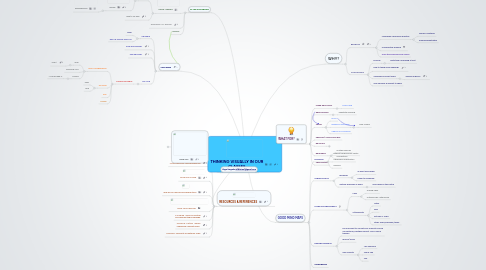
1. SOFTWARE
1.1. CRITERIA
1.1.1. FREE
1.1.2. EASY & SIMPLE FOR STS
1.2. FOR SECONDARY
1.3. FOR PRIMARY
1.4. ON LINE
1.4.1. DOWNLOADABLE
1.4.1.1. EASILY EMBBEDING
1.4.1.1.1. WIKI
1.4.1.1.2. GOOGLE SITE
1.4.1.1.3. OTHER
1.4.1.2. PICTURE
1.4.1.2.1. jpeg
1.4.1.2.2. png
1.4.1.3. PDF
1.4.1.4. OTHER
2. IN THE CLASSROOM
2.1. HAND- DRAWN
2.1.1. DISPLAY
2.1.1.1. energy
2.1.1.1.1. zzzzzzzzzzzzz
2.1.2. how to for kids
2.2. ANALOGIC VS. DIGITAL
2.3. DIGITAL
3. HOW TO?
3.1. TUTORIAL 1
3.2. VIDEO
3.3. RESOURCES
3.3.1. OXFORD PAPERSHOW for mind mapping
3.3.1.1. videos
3.3.2. NOVAK: How to build a concept map in Science
3.4. How to Mind Map: A Beginner’s Guide
4. RESOURCES & REFERENCES
4.1. MIND MAPPING SOFTWARE BLOG
4.2. MIND MAP TUTOR
4.3. why do you need mind mapping tools
4.4. MIND MAP CENTRAL
4.5. P.S.MEIER 'Tools for eliciting and representing knowledge'
4.6. NOVAK & CAÑAS 'Theory underlying Concept maps'
4.7. MORTON. University of Waterloo video
5. Bego Iturgaitz b08lehen1@gmail.com
6. WHAT FOR?
6.1. MAKE DECISIONS
6.1.1. EVALUATE
6.2. BRAINSTORM
6.2.1. negotiate meaning
6.3. THINK
6.3.1. PLAN
6.3.2. PROBLEM SOLVING
6.3.2.1. Task- based:
6.3.3. CREATIVE THINKING
6.4. PRESENT/ COMMUNICATE
6.5. REVISION
6.5.1. info rearrangement
6.5.1.1. reconceptualization
6.6. RESEARCH
6.6.1. multiple sources
6.6.2. connections
6.7. TAKE NOTES
7. GOOD MIND MAPS
7.1. DYNAMIC
7.1.1. Radiant thinking from center
7.1.2. Hierarchy & Association
7.1.3. Revision
7.2. CLEAR LAYOUT
7.2.1. keywords
7.2.1.1. as short as possible
7.2.1.2. easier to remember
7.2.2. multiple branches or layers
7.2.2.1. main ideas on the centre
7.3. LINKS & ATTACHMENTS
7.3.1. Links
7.3.1.1. Among ideas
7.3.1.2. Outside links- extend info
7.3.2. Attachments
7.3.2.1. Notes
7.3.2.2. Files
7.3.2.3. Pictures & video
7.3.2.4. Other: maps,calendars, tasks...
7.4. EXPORT FORMATS
7.4.1. you may want to convert your map into a more conventional, palatable format FOR LINEAR thinkers
7.4.2. recycle/ reuse
7.4.3. Main formats
7.4.3.1. .mm freemind
7.4.3.2. .png & .jpg
7.4.3.3. .pdf
7.5. COWORKING
7.6. TIPS
7.6.1. Outsider look.
7.6.1.1. If you can see the main points or topics in a clear way, then you have made a good mind map.
7.6.2. Keep It Organized
7.6.3. Start Wide, and Then Narrow In
7.6.4. Don’t Box Yourself In, Leave Plenty of Space
7.6.5. Colours, symbols & drawings copiously
8. WHY?
8.1. BENEFITS
8.1.1. Meaningful Learning in practice
8.1.1.1. learner's centered
8.1.1.2. meaning negotiation
8.1.2. Collaborative learning
8.1.3. Work the same way brain works
8.2. CHALLENGES
8.2.1. process
8.2.1.1. quite time consuming at first
8.2.2. how to teach mind mapping?
8.2.3. Assessing Concept maps
8.2.3.1. Sample RUBRICS
8.2.4. very personal & difficult to share
